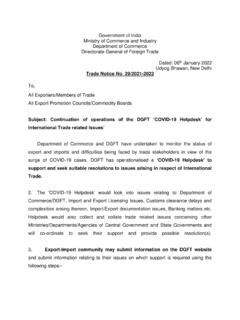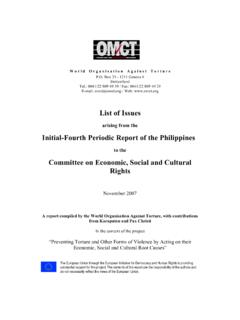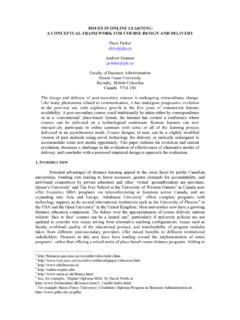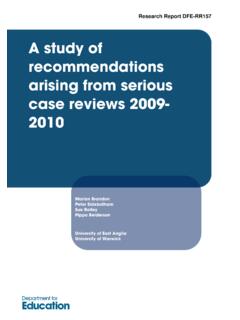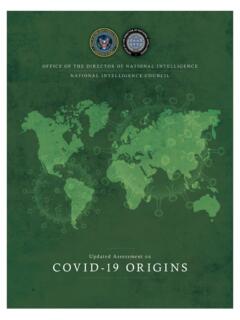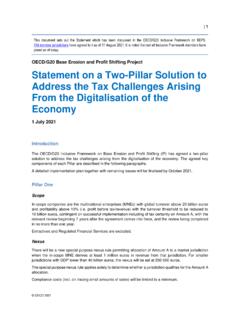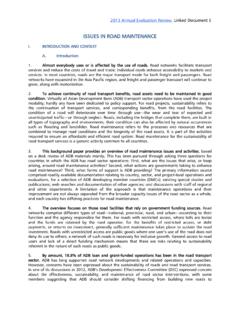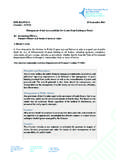Transcription of Inclusive Framework on BEPS - OECD
1 TheOECD/G20 BaseErosionandProfitShifting(BEPS)Projec taimstocreateasinglesetofconsensus-based internationaltaxrulestoaddressBEPS, ,theInclusiveFrameworkhascontinuedtowork ontheissue, ,membersoftheInclusiveFrameworkagreedtoe xamineproposalsintwopillars, , ,inanincreasinglydigitalage, sviewsonkeypolicyfeatures,principlesandp arameters,andidentifiesremainingpolitica landtechnicalissueswheredifferencesofvie wsremaintobebridged, BASE EROSION AND PROFIT SHIFTING PROJECTI nclusive Framework on BEPS 1 TAX CHALLENGES ARISING FROM DIGITALISATION REPORT ON PILLAR ONE BLUEPRINT OECD 2020 OECD/G20 Base Erosion and Profit Shifting Project Tax Challenges Arising from Digitalisation Report on Pillar One Blueprint Inclusive Framework on BEPS PUBE 2 TAX CHALLENGES ARISING FROM DIGITALISATION REPORT ON PILLAR ONE BLUEPRINT OECD 2020 This document and any map included herein are without prejudice to the status of or sovereignty over any territory.
2 To the delimitation of international frontiers and boundaries and to the name of any territory, city or area. Please cite as OECD (2020), Tax Challenges Arising from Digitalisation Report on Pillar One Blueprint: Inclusive Framework on BEPS, OECD/G20 Base Erosion and Profit Shifting Project, OECD Publishing, Paris, OECD 2020 The use of this work, whether digital or print, is governed by the Terms and Conditions to be found at 3 TAX CHALLENGES ARISING FROM DIGITALISATION REPORT ON PILLAR ONE BLUEPRINT OECD 2020 Foreword The integration of national economies and markets has increased substantially in recent years, putting a strain on the international tax rules, which were designed more than a century ago.
3 Weaknesses in the current rules create opportunities for base erosion and profit shifting (BEPS), requiring bold moves by policy makers to restore confidence in the system and ensure that profits are taxed where economic activities take place and value is created. Following the release of the report Addressing Base Erosion and Profit Shifting in February 2013, OECD and G20 countries adopted a 15-point Action Plan to address BEPS in September 2013. The Action Plan identified 15 actions along three key pillars: introducing coherence in the domestic rules that affect cross-border activities, reinforcing substance requirements in the existing international standards, and improving transparency as well as certainty.
4 After two years of work, measures in response to the 15 actions were delivered to G20 Leaders in Antalya in November 2015. All the different outputs, including those delivered in an interim form in 2014, were consolidated into a comprehensive package. The BEPS package of measures represents the first substantial renovation of the international tax rules in almost a century. Implementation is now well underway. The BEPS package was designed to be implemented via changes in domestic law and practices, and in tax treaties. With the negotiation of a multilateral instrument (MLI) having been finalised in 2016 to facilitate the implementation of the treaty related BEPS measures, over 90 jurisdictions are covered by the MLI.
5 The entry into force of the MLI on 1 July 2018 has paved the way for swift implementation of the treaty related measures. OECD and G20 countries also agreed to continue to work together to ensure a consistent and co-ordinated implementation of the BEPS recommendations and to make the project more Inclusive . Globalisation requires that global solutions and a global dialogue be established which go beyond OECD and G20 countries. As a result, the OECD established the OECD/G20 Inclusive Framework on BEPS ( Inclusive Framework ) in 2016, bringing together all interested and committed countries and jurisdictions on an equal footing in the Committee on Fiscal Affairs and all its subsidiary bodies.
6 The Inclusive Framework , which already has more than 135 members, is monitoring and peer reviewing the implementation of the BEPS minimum standards as well as completing the work on standard setting to address BEPS issues. In addition to its member jurisdictions, other international organisations and regional tax bodies are involved in the work of the Inclusive Framework , which also consults business and civil society on its different work streams. Addressing the tax challenges arising from the digitalisation of the economy has been a top priority of the BEPS Project and the Inclusive Framework since 2015 with the release of the BEPS Action 1 Report.
7 At the request of the G20, the Inclusive Framework has continued to work on the issue , delivering an interim report in March 2018. In January 2019, members of the Inclusive Framework agreed to examine proposals in two pillars, which could form the basis for a consensus solution to the tax challenges arising from digitalisation. Pillar One is focused on nexus and profit allocation whereas Pillar Two is focused on a global minimum tax intended to address remaining BEPS issues. A programme of work to be conducted on Pillar One and Pillar Two was adopted in May 2019 and later endorsed by the G20 in June 2019.
8 As part of the 4 TAX CHALLENGES ARISING FROM DIGITALISATION REPORT ON PILLAR ONE BLUEPRINT OECD 2020 programme of work, the OECD Secretariat was mandated to carry out an economic analysis and impact assessment of the Pillar One and Pillar Two proposals. In July 2020, the G20 mandated the Inclusive Framework to produce reports on the Blueprints of Pillar One and Pillar Two by the G20 Finance Ministers meeting in October 2020. This report was approved by the Inclusive Framework on 8-9 October 2020 and prepared for publication by the OECD Secretariat. 5 TAX CHALLENGES ARISING FROM DIGITALISATION REPORT ON PILLAR ONE BLUEPRINT OECD 2020 Table of contents Foreword 3 Cover Statement by the OECD/G20 Inclusive Framework on BEPS on the Reports on the Blueprints of Pillar One and Pillar Two 7 1.
9 Executive summary 10 Introduction 10 Pillar One Blueprint 11 2. Scope 19 Overview 19 Activity tests 22 Threshold tests 61 3. Nexus 65 Overview 65 Features and operation of the nexus rules 66 Next steps 70 4. Revenue sourcing rules 71 Overview 71 Revenue sourcing rules 72 Commentary on revenue sourcing rules 83 Next steps 98 5. Tax base determinations 100 Overview 100 A PBT measure based on consolidated financial accounts 103 The segmentation Framework 109 Loss carry-forward rules 116 6. Profit allocation 123 Overview 123 The formula to determine the quantum of Amount A 126 Potential differentiation mechanisms 129 The issue of double counting 132 Next steps 137 6 TAX CHALLENGES ARISING FROM DIGITALISATION REPORT ON PILLAR ONE BLUEPRINT OECD 2020 7.
10 Elimination of double taxation 139 Overview 139 Component 1: Identifying the paying entities 142 Component 2: Methods to eliminate double taxation 154 Application of the marketing and distribution profits safe harbour 158 Next steps 159 8. Amount B 160 Overview 160 Key design features of Amount B 162 Next steps 172 9. Tax Certainty 174 Overview 174 A new Framework for dispute prevention and resolution for Amount A 176 Dispute prevention and resolution beyond Amount A 197 Next steps 204 10. Implementation and administration 205 Overview 205 Implementation 205 Removal of unilateral measures 211 Next steps 211 Annex A.










